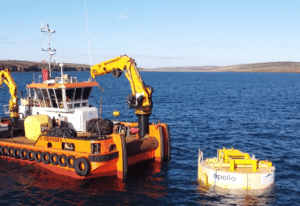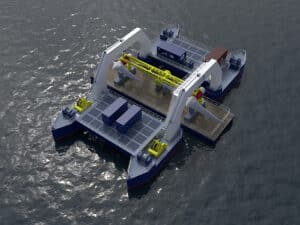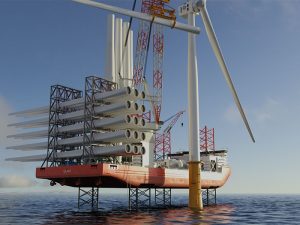
Shipboard carbon capture concept unveiled
Written by Nick Blenkey FEBRUARY 12, 2013 — Classification society DNV and Process Systems Enterprise Ltd. (PSE), a specialist in process modeling technology, have released the results of the maritime CCS (carbon capture and storage) research and development project.
FEBRUARY 12, 2013 — Classification society DNV and Process Systems Enterprise Ltd. (PSE), a specialist in process modeling technology, have released the results of the maritime CCS (carbon capture and storage) research and development project.
The project has developed a concept design for on-board chemical CO2 capture. The system consists of a chemical absorption plant that separates CO2 from flue gases, a liquefaction unit where the captured CO2 is compressed and condensed using a refrigerant and two storage tanks where the liquid CO2 product is temporarily stored until discharge into transmission and storage infrastructures at the next suitable port.
The results show that the concept is technically feasible and capable of reducing ship CO2 emissions by up to 65 percent. For a VLCC tanker, this could correspond to capturing more than 70,000 tonnes of CO2 per year, transforming them from emissions to a tradable product.
“In response to more stringent environmental regulations and complex market conditions, we see an increased demand for innovative solutions towards higher efficiency and greener operations,” says Dr. Nikolaos Kakalis, Head of DNV Research & Innovation Greece. “Our R&D activities, such as the carbon capture initiative which is completely new in the field of maritime transportation, pave the future towards next-generation solutions for achieving more energy-efficient, environmentally friendly and sustainable maritime transportation”.
Prof. Costas Pantelides, Managing Director of PSE, says “This has been a challenging design problem with tight constraints. Applying a model-based engineering approach has been key to exploring the process decision space rapidly and effectively, and developing technically feasible and economically viable solutions.”
Maritime CO2 emissions are estimated at over 1,000 million tonnes per year, or 3 percent of total emissions, and are expected to reach 2,000 to 3,000 million tonnes by 2050. The U.K. government has included maritime emissions in the reduction targets set by a Climate Change Bill, and there are likely to be continued efforts by IMO to reduce emissions from international shipping.
Because ship emissions are concentrated – unlike other forms of transportation – the potential to capture CO2 at source has been the key focus of the project.
The Maritime CCS project was jointly financed by the two partners, the UK’s Technology Strategy Board and the Research Council of Norway under the EUROSTARS initiative.
The project took into account the unique challenges posed by the maritime environment – constant movement, limited space and access to utilities, stringent safety requirements and the need for energy efficiency.





Leave a Reply
You must be logged in to post a comment.